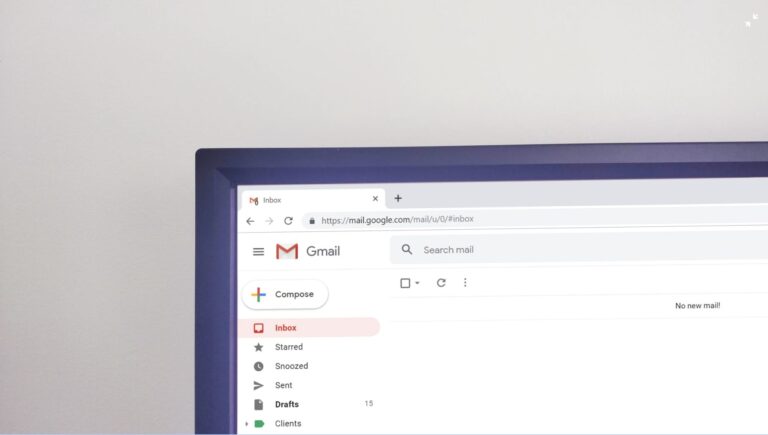[Series] Growing Your Business: Marketing Automation FTW

This is part of our ‘Way of the Tortoise’ series. You can check out our other posts in this series here. Check back regularly to read our other updates.
Disclaimer: You actually have to try the things I suggest to you in this article. In fact, nothing here is easy. What’s the thing we are going to discuss? It’s a thing called marketing automation. It’s a thing that has been all the rage for quite a while now, and there’s a good reason for that. In this article, I am going to discuss a little bit of what I have learned about and how you can quickly implement necessary automation into your own business.
What do you want to know about Marketing Automation?
I think Wikipedia says it best:
Marketing automation refers to software platforms and technologies designed for marketing departments and organizations to more effectively market on multiple channels online (such as email, social media, websites, etc.) and automate repetitive tasks.
The short of it is simply: automating repetitive and often tedious tasks in your marketing.
The term “marketing” can be ambiguous to some. What am I referring to when I talk about marketing? Well, I’m talking about a few things broadly. Specifically, I’m talking about automating your lead and sales pipeline; I’m talking about managing client accounts and relationships; I’m talking about shaking free leads from past conversations that never went anywhere aka lead nurturing. Does that sound cool? I think it does!
I’ll share with you a few ways in which I’m implementing marketing automation in my own business.
Before I get started, though…
I’d like to touch on why I’m doing this. At the beginning of the year, I made a decision to organize my client relationship stuff. I thought of utilizing a CRM, so I could keep track of conversations and manage follow-ups. Automation wasn’t part of the equation yet. A couple of friends recommended Agile CRM and Active Campaign. I trialed both and fell for AC right away, and that set me down this path, which I’m sharing with you today.
Also, I hear a lot of people say you don’t need a CRM, or you need at least a few more people before you can actually use a CRM. I think that’s bullshit. If you find the right tool and commit to using it, it will help you immensely, ESPECIALLY if you are on your own.
Tools of the trade.
Marketing automation isn’t hard—if you have the right tools. What are the right tools?
Well, for starters, you need a website. For my marketing site, I’m using WordPress. It powers over 25% of the web, it’s free, and it’s not horribly difficult to use—actually it is hard if you don’t know what you’re doing—and if you need help, I know a couple of people who can help train you on how to use it. Also, I would recommend Gravity Forms, Formidable, or Ninja Forms and utilize their Zapier or Active Campaign add-on (only Gravity Forms has an AC add-on).
Next, I use, love, and recommend Active Campaign (AC) for list management and marketing automation. AC really is at the center of all of this. For the longest time, I just thought it was an “also-ran” in a field of ConstantContacts, Emmas, and MailChimps… They all do the same sort of thing. However, the automation and CRM bundle in Active Campaign is so, so good! What makes the automation so easy? I’m not sure who the industry leader is in this space, but Active Campaign has among the best drag-and-drop automation builders I’ve ever used. Building automated workflows is a snap. Also, it has a number of pre-built automations that you can import and “season to taste.” AC is also a lot cheaper than some other services in the same area such as SalesForce, RelateIQ, and InfusionSoft.
Lastly, I do recommend signing up for a paid Zapier account. It’s the “digital glue” that brings all the things together, which allows you to use the tools you love in your evil plot to take over the world with marketing automation!
4 Ways I Use Marketing Automation
Streamlining your client onboarding and exit processes
Last year, I was working with Wes Chyrchel on my process, and he provided a lot of insight. One thing he mentioned was setting expectations and how you meet those in your process. He had a strong process in place. I didn’t put that plan into action right away; in fact, I forgot all about it!
That’s when Jennifer Bourn, of Bourn Creative, started sharing a bit about what her company’s onboarding process was like. I was floored because it seemed like such an easy way to establish trust and flow and I wasn’t doing it…
Before I go on, I’ll just explain a bit about onboarding and how it applies to you and your business. Onboarding is simply a means of communication with your customer or client. It’s your opportunity to set expectations with them in how you work when you’re available, and how to deal with the unexpected. So the concept isn’t just for digital pros, it’s for ALL pros who deal with customers. All!
I have two automated sets of communication that go out when dealing with our clients:
- A welcome email is sent to the customer. This lets them know how to contact us and hours of availability, it tells them a bit about our process, it also communicates the tools we use to manage projects and support. That email is followed up with an email about our project management tool and basic usage. Another email is sent out on how to request help etc.
- Another automation fires off at the end of our engagement. It explains the terms of our support after the project wraps up; we also try to upsell retainer services here if they didn’t already signup, it also asks them to post their honest reviews on a few different networks. There is a follow-up series that goes out 30 days and 60 days after. If we haven’t heard from the client, a final message is sent out to check in. Then they are placed into another automation cycle, which I’ll talk about later.
The point is to set expectations from the start and give people the info they need for us to help them quickly. Also, the “exit sequence” as I call it ensures a smooth hand-off at the close of the project.
Nurturing your sales/leads funnel
You get leads for your business. At least that’s my assumption. Some of those leads are from word of mouth and some happen organically when people find you in a search. I read somewhere that maybe 30% of leads that contact a service provider are ready to buy upon making contact. Three zero! There’re lots of folks not sure what they want to do, or they just don’t know what they don’t know. That’s okay. As a service provider, it’s your job to educate.
I think many business owners often forget about their prospective customers and fail to follow up. There are a lot of reasons for it. We can forget quickly enough, life happens! We may feel sleazy about bothering someone who doesn’t want to bother following up with us. That’s a thing, too.
I use automation to set up a series of emails that help move a prospect along in the sales process, and a deal is created for the prospect. First, a client either comes in organically, or they are a referral from my network and that’s where they start. They get an email from me, that email contains a link to schedule a meeting. Using Zapier, if the prospect sets up a meeting, they automatically move the ‘scheduled meeting’ part of the funnel. If they don’t set up a meeting, they stay where they are at and will get the other follow up emails until they respond or set up a meeting. If the prospect never replies, their deal associated with them is marked as lost and then I add them to a different automation, which I’ll talk about later.
If I create a proposal and send it, the prospect is moved to the follow-up part of the funnel, and they are removed from the prospect automation to my estimate follow up. There are then actions that fire off if they accept or decline the proposal. If they agree they go to the onboarding automation, if the client declines then they get a follow-up email asking why and if we can chat some more. Simps!
An automation is a low-effort way to manage your sales process and ensures that you keep communication going. If people can’t be bothered to respond, then they get moved out of line and placed elsewhere.
Pinging old clients you haven’t worked with in a while
I remember the first automation I ran to kick up sales. I created a 33 client segment of past customers I hadn’t talked to in a while and who were not working with me actively. I created a sequence that notified them about website updates and the importance of doing them. It was a series of five emails. The initial email just said hello, asked the client how they were doing and then asked: “Hey, when’s the last time you updated your site?”
Just over half of the folks replied to me. The ones who did reply got an auto response on how to update their site, a list of steps on how to do it safely. Also, I suggested I could do it for them for a fee, or they could signup for my retainer services. My response rate was only 26%, but that turned into just over $1,000 in recurring monthly revenue and then additional money for the one-off updates. I consider that a successful first pass.
I’ve also seen it written that effective email campaigns are a lot like dipping into your ATM. I immediately saw how true that was.
You won’t catch all your clients and inspire them to buy from you again, but if they were a good client and you got on well, they would certainly be more easily persuaded to by from you.
Find a few things you can do that are easy wins. Provide a product discount or bundle or something that helps incentivize an action within that communication.
Establishing Trust, Expertise and Thought Leadership
Remember up above, where I mentioned that there’s another automation I add prospects to in my CRM? Here is where I talk about that!
So, there are prospects who don’t respond, and there are clients who I no longer do any work with; and then folks who don’t fall into any particular category who may benefit from the things that I share. Everyone eventually hits that automation. Troy Dean has something he calls an “Anti-Follow-Up,” which comes from his WP Elevation offering, where he focuses on providing value to the client and not selling a thing. I think that is brilliant, and Troy’s a smart egg.
The automation goes for about six months or so. It’s gotten a little longer now because I’ll add communications that discuss articles I have written that I think would benefit the client in some way. If you’re a Family Law Attorney, you could provide all sorts of tips in these sequences; you can talk about crucial things a parent would need to know about your custody agreement, or you could talk about how child support is figured out for non-custodial parents. If you’re a house painting business you can educate people on how to treat their freshly painted abode; you could similarly educate homeowners on the best time to paint their house given their location, etc. The possibilities are endless!
Your emails are not a hard-sell either. You’re providing value, value, value! That’s the mindset you need to carry it. Someone who appreciates you and the work you do will no doubt reach out and get in touch.
Final thoughts
When it comes to “marketing automation” it’s not all about sales for me. It’s about managing relationships, it’s about building trust, it’s about solidifying partnerships and, yeah, there exists some sales trickery, too. But do some research and see what other folks are doing and find out what they are using. Jonathan at SureFire Web has a nice write-up.
It’s all about the “little wins” that automation can do for you. What are some of yours? Or did think of any just now?
Other Posts in This Series
Way of the TortoisePhoto Cred: Siyan Ren
Get Notified When We Publish New Content!
Join more than 2,500 people who get our marketing automation, business marketing, and WordPress news!

![[Series] Grow Your Business Online First Steps. Way of the Tortoise](https://digisavvy.com/wp-content/uploads/2016/05/way-of-the-tortoise-768x488.jpg)





Marketing automation is like a pulley system — it’s not replacing my efforts, it’s multiplying my force, allowing me to do more by myself than I could otherwise.
I could use 4 people to pick up that box, or, with a series of pulleys, I could do it myself. Marketing automation is the same. I don’t need a huge salesforce before implementing a CRM — I can use it now to multiply my own efforts.
Great article Alex — recommending this one to a few of my friends who don’t know about CRM magic (cause this is basically magic).